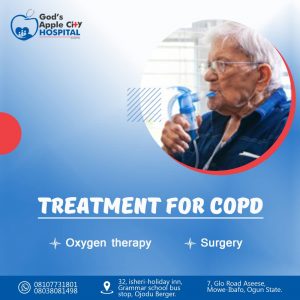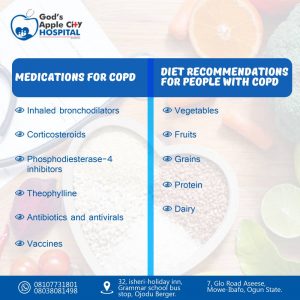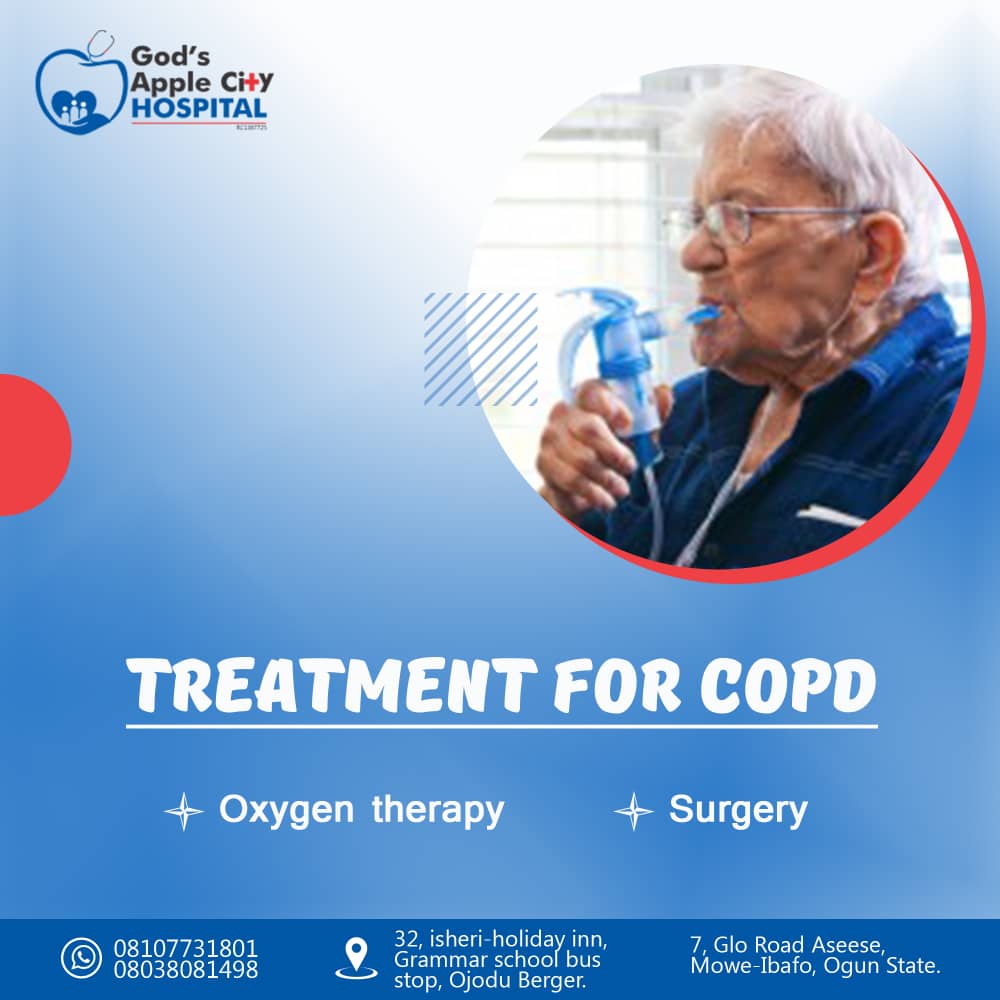Treatment for Chronic obstructive pulmonary disease
Treatment can ease symptoms, prevent complications, and generally slow disease progression. Your healthcare team may include a lung specialist (pulmonologist) and physical and respiratory therapists.
Oxygen therapy
If your blood oxygen level is too low, you can receive supplemental oxygen through a mask or nasal cannula to help you breathe better. A portable unit can make it easier to get around.
Surgery
Surgery is reserved for severe COPD or when other treatments have failed, which is more likely when you have a form of severe emphysema.
One type of surgery is called bullectomy. During this procedure, surgeons remove large, abnormal air spaces (bullae) from the lungs.
Another is lung volume reduction surgery, which removes damaged upper lung tissue. Lung volume reduction surgery can be effective at improving breathing, but few patients undergo this major, somewhat risky procedure.

Medications for Chronic obstructive pulmonary disease
Medications can reduce symptoms and cut down on flare-ups. It may take some trial and error to find the medication and dosage that works best for you, but these are some of your options:
Inhaled bronchodilators
Medicines called bronchodilators help loosen tight muscles in your airways. They’re typically taken through an inhaler or nebulizer.
Short-acting bronchodilators last from 4 to 6 hours. You only use them when you need them. For ongoing symptoms, there are long-acting versions you can use every day. They last about 12 hours.
Here’s a list of recommended LABA/LAMA bronchodilator therapies:
- Aclidinium/formoterol
- Glycopyrrolate/formoterol
- Tiotropium/olodaterol
- Umeclidinium/vilanterol
Corticosteroids
Long-acting bronchodilators are commonly combined with inhaled glucocorticoids. A glucocorticoids can reduce inflammation in the airways and lower mucus production.
The long-acting bronchodilator can relax the airway muscle to help the airways stay wider. Corticosteroids are also available in pill form.
Phosphodiesterase-4 inhibitors
This type of medication can be taken in pill form to help reduce inflammation and relax the airways. It’s generally prescribed for severe COPD with chronic bronchitis.
Theophylline
This medication eases chest tightness and shortness of breath. It may also help prevent flare-ups. It’s available in pill form.
Theophylline is an older medication that relaxes the muscle of the airways, and it may cause side effects. It’s generally not a first-line treatment for COPD therapy.
Antibiotics and antivirals
Antibiotics or antivirals may be prescribed when you develop certain respiratory infections.
Vaccines
To lower risk of other respiratory infections, ask your doctor if you should get a yearly flu shot, pneumococcal vaccine, and a tetanus booster that includes protection from pertussis (whooping cough).
Diet recommendations for people with Chronic obstructive pulmonary disease
Choose a variety of nutritious foods from these groups:
- Vegetables
- Fruits
- Grains
- Protein

Also, remember to go easy on the salt. It causes the body to retain water, which can strain breathing.

